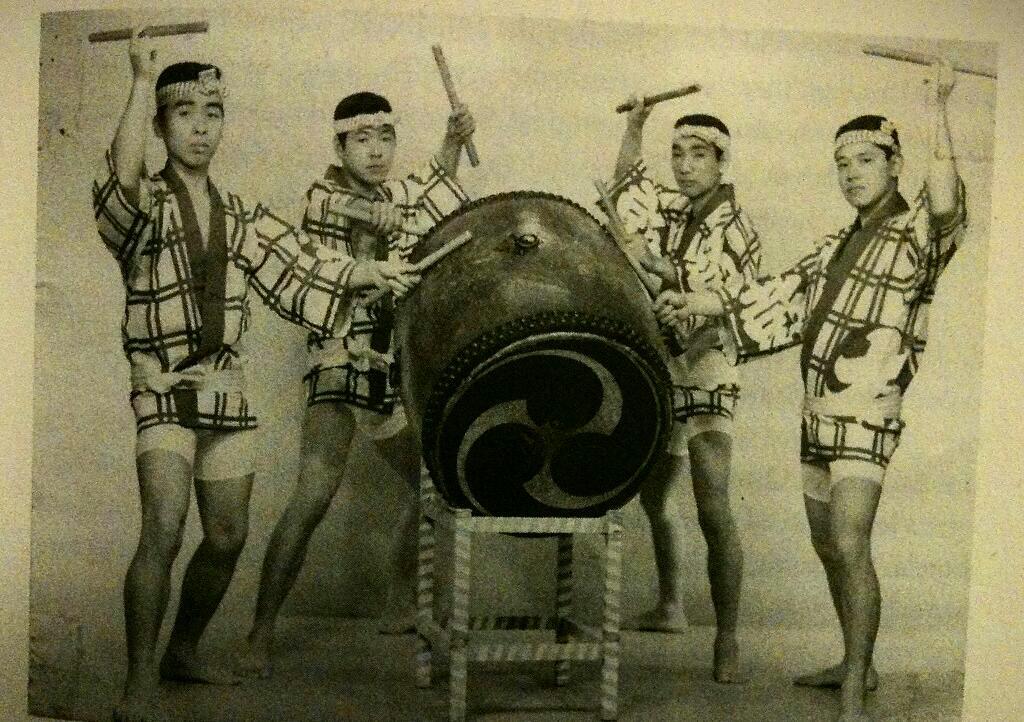Workshop Description
All classes will be recorded and distributed to registrants within 1-2 days of each session. Recordings will be available for access for one month after the last session.
Dive into the Art of Kabuki Bayashi with taiko legend Saburo Mochizuki. This workshop series will give students an introduction to the rich world of traditional Japanese music. The music of Kabuki is a gold mine of patterns that can be used on taiko as well as a variety of other instruments. The Ōdaiko is not just a large drum, but it is integral to the sound effects of Kabuki plays. Learn how to play the sounds of water, waves, mountains, and more! In addition to the well-known Shime Daiko, students will learn more about the “Daishō” – Kotsuzumi and Ōtsuzumi, two special hour-glass hand drums, and how their sounds provide the backdrop for melodic instruments, the Shamisen and the Fue.
Saburo sensei’s insight into the development of taiko and traditional music is unique. As one of the original four Sukeroku Daiko members, he was influential at the very birth of modern taiko. His depth of knowledge of Hogaku and traditional musical forms and his experience fusing these traditions with a variety of different artforms gives him a truly deep and insightful perspective on the taiko world. This workshop series will be a great opportunity to learn from one of the pioneers of the taiko world.
The workshop will be given in Japanese by Saburo sensei, translated to English by his apprentice J.D. Andrade (Mukon Mochizuki).
Read more about Saburo-sensei’s journey here.
Personal Message from Saburo Sensei
“I’d like to give a warm welcome to anyone in the US, Japan and beyond who’s been playing Taiko and is interested in Kabuki Bayashi or Japanese traditional percussion instruments. Kabuki Bayashi is a treasure trove of percussion instruments. It is versatile and can be fused with a variety of different instruments. And the best part is that Kabuki Bayashi is copyright-free, so anyone can take advantage of it! I’d like you to learn Kabuki Bayashi and incorporate what you learned into your repertoire to create original music of your own. I’m eagerly waiting for your composition fused with Kabuki Bayashi! You might think of Kabuki and Hogaku music as something ancient, but in reality, they are constantly evolving.”
– Saburo Mochizuki
Schedule
Class 1: Wednesday Oct 27th: [Ōdaiko] 大太鼓の章
Class 2: Wednesday Nov 3rd: [Shime Daiko] 締太鼓の章
Class 3: Wednesday Nov 10th: [“Daishō” (Kotsuzumi/Ōtsuzumi)] 大小鼓の章
Class 4: Wednesday Nov 17th: [The Ensemble (Ohayashi/Shamisen)] お囃子と三味線の章
All classes are One Hour in duration starting at:
2:00 PM HT (Honolulu)**
5:00 PM PT (Los Angeles)
6:00 PM MT (Denver)
7:00 PM CT (Chicago)
8:00 PM ET (Toronto/New York)
1:00 AM (London +1 day)*
9:00 AM (Tokyo +1 day)**
11:00 AM (Sydney +1 day)**
* Only for the 11/3 class, start time is 12:00 AM (+1 day) for London due to Daylight Saving Time change in parts of Europe. Please check your local time.
** For the 11/10 and 11/17 classes, start time is 3:00PM for Honolulu, 10:00 AM (+1 day) for Tokyo and 12:00 PM (+1 day) for Sydney due to Daylight Saving Time change in the US. Please check your local time.
What Do I Need?
- Comfortable space for you to sit (either on the floor or in a chair)
- Hitting surface (drum pad, kaDON TimbreTaiko, pillow, etc)
- Bachi (use light/thinner bachi for kaDON TimbreTaiko)
- Pen and paper for note taking
- Water
Important Notes
- Each live class is followed by an optional 30-minute Q&A time
- Can’t attend at the scheduled times? All classes will be recorded (instructor view only) and distributed to all registrants within 1-2 days of each session. Recordings will be available for access until one month after the last session.
How Do I Register?
This workshop is no longer available.
Saburo Mochizuki Profile
How It All Began
Born in 1947 in Yushima, Tokyo as Yutaka Ishizuka, Saburo Mochizuki first played taiko when he was in the fifth grade at a local Obon festival at Yushima Tenjin Shrine. He fell in love with taiko and couldn’t get enough of it that he would continue to play on the wooden pillars of the yagura tower even when kids were no longer allowed to play after dark.
Back then, taiko was mainly played at local festivals by the locals, and no one played taiko as their main profession. However, by the time Mochizuki won first prize at a local taiko competition while in high school, he was already determined to become a professional taiko player. It was his awakening to the art of taiko.



